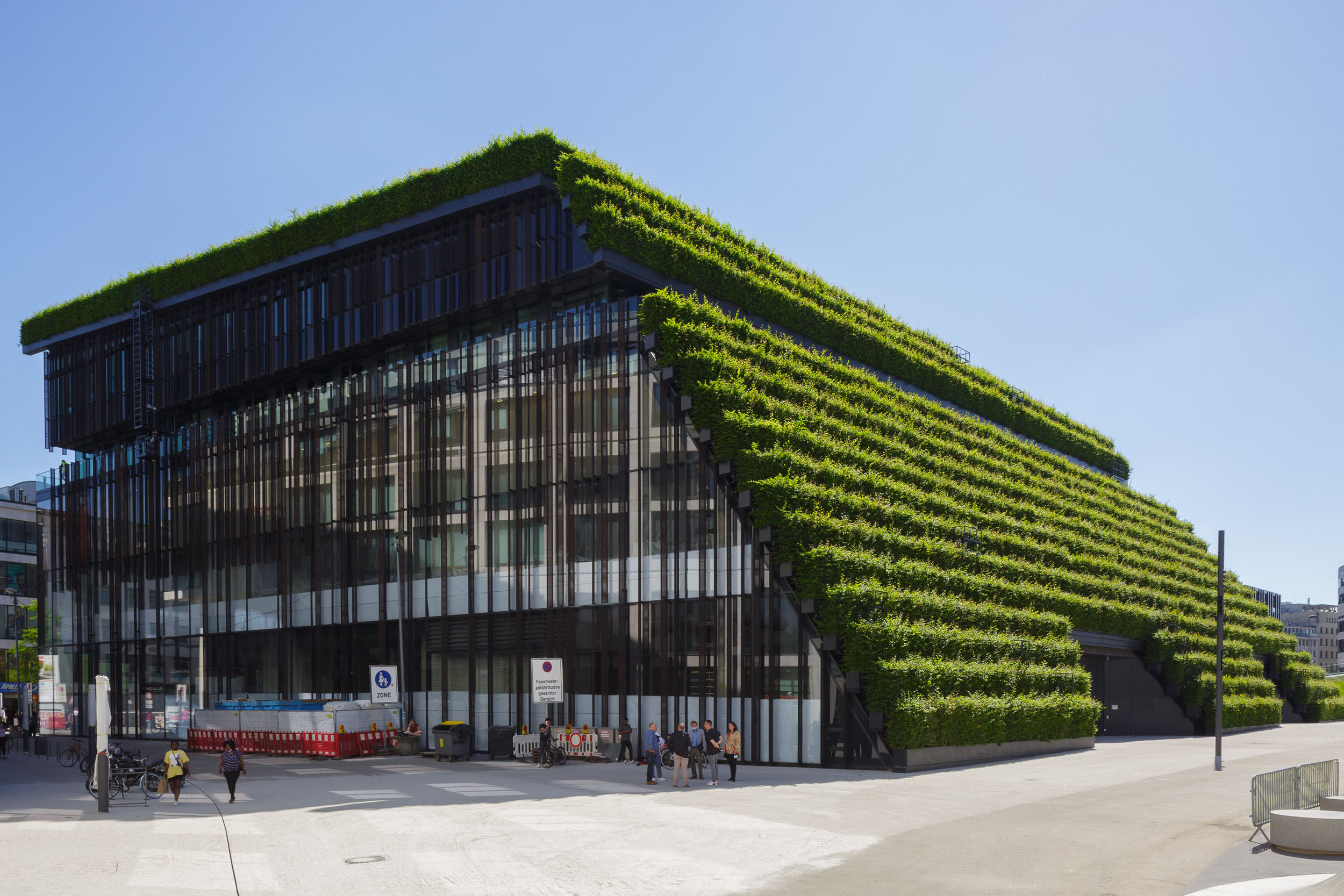
All pictures © Optigrün international AG
Green island in the centre of Düsseldorf instead of a city motorway – building greening makes it possible.
Location: Kö-Bogen II
City: Düsseldorf / Germany
Date: 2020
Designer/Project owner: Ingenhoven architects, Jointventure CENTRUM Düsseldorf and B&L Group Hamburg
Roof/Wall Slope: 3750 sqm/30000 sqm
Europe’s largest green facade

The completion of Kö-Bogen II marks the end of a comprehensive urban redevelopment in the centre of Düsseldorf. Where a bustling overpass and the grey concrete roof of the underground car park on Gustaf-Gründgens-Platz spoiled the look of the city centre in 2013, you can now find Europe’s largest green facade. Patches of trees, seating, a lawn area and restaurants opposite the newly built office and commercial building now invite people to spend some time here.
The 27 m high building measuring around 41,000 m² was designed by Düsseldorf-based architect Christoph Ingenhoven.
The Kö-Bogen II complex is not only intended to create an outstanding building with architecture that shapes the city, but a comprehensive, sustainable concept should also be implemented for climate protection. After all, the consequences of climate change are clear to see everywhere: Urban heat islands and urban flash flooding. All consequences of the steady increase in soil sealing. According to the German Environment Agency,
56 ha (approx. 40 football pitches) of untouched nature is sealed with roads, living space and industrial sites every day in Germany, thus removing it from the natural water cycle. The natural water cycle – precipitation, drainage, evaporation – is hugely disrupted by this. High-density construction and soil sealing transform cities into heat stores.
Causes and problems specifically in urban areas
Sealing surfaces causes stormwater, which evaporates from natural surfaces, to drain away from the sealed surface much more quickly and in an uncontrolled manner. The drained stormwater is not evaporated.
However, the evaporation of stormwater binds a large amount of energy, which is introduced into our habitat by sunlight, in the form of latent (not sensible) heat. This means the energy used for the stormwater evaporation process is energy that is transported out of our habitat, thus creating a cooling effect. If energy is not transported out of our habitat with stormwater, it results in urban heat islands.
Green sloping facade
The green sloping facade of the building complex with a hornbeam hedge comprises 30,000 hornbeams that were planted in Optigrün planters. This corresponds to a impressive length of 8 kilometres.
The canopy of the facade measuring over 4 football pitches is an immense energy converter. The greenery prevents the facade from heating to up to 70 degrees with intense sunlight and this heat from going back into the ambient air. Almost half of the solar energy is converted into water vapour. Due to the evaporation that takes place, the ambient air is cooled and the typical urban gap in the natural water cycle is closed.
With Kö-Bogen II, an attractive green concept has been implemented in Düsseldorf which sustainably demonstrates an ecological benefit: with the help of evaporation, the foliage of the hornbeams cools the ambient temperature, binds to fine dust, takes in CO2 and produces oxygen.
Designer: Optigrün international AG
Year: 2020
City: Düsseldorf, Germany



